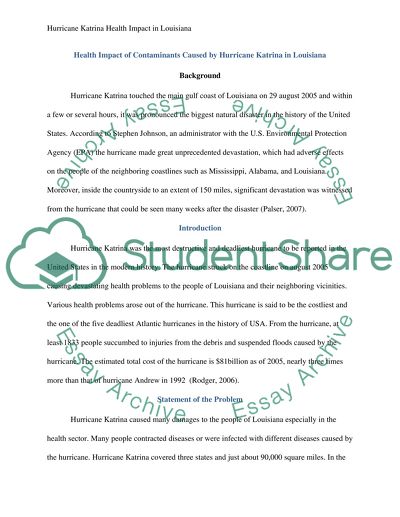Cite this document
(“Hurricane Katrina Health Impact in Louisiana Research Paper”, n.d.)
Retrieved from https://studentshare.org/environmental-studies/1402143-a-research-paper-outlining-an-environmental-health
Retrieved from https://studentshare.org/environmental-studies/1402143-a-research-paper-outlining-an-environmental-health
(Hurricane Katrina Health Impact in Louisiana Research Paper)
https://studentshare.org/environmental-studies/1402143-a-research-paper-outlining-an-environmental-health.
https://studentshare.org/environmental-studies/1402143-a-research-paper-outlining-an-environmental-health.
“Hurricane Katrina Health Impact in Louisiana Research Paper”, n.d. https://studentshare.org/environmental-studies/1402143-a-research-paper-outlining-an-environmental-health.


